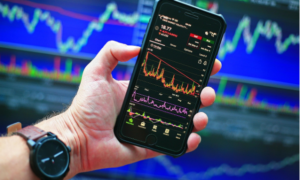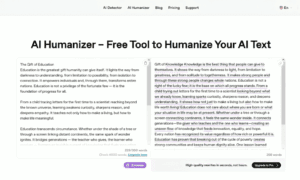Creating precise buyer personas is the important element of good B2B market analysis. Buyer Personas are imaginary pictures of your ideal customers relying on genuine data and research. These personas allow businesses to appreciate the needs, obstacles and desires of their target audience thereby being able to strategically plan marketing strategies and messages. In the B2B scenario, buyer personas can be used to identify important decision makers, influencers and finally end users in a company. Once businesses understand these roles, they will be able to drive specific campaigns that will attract all segments, and in the long run, increase their customer experience.
Defining the Purpose of Buyer Personas
Before building a buyer’s persona, it is essential to clearly set the purpose of it. In B2B market research, therefore, the main objective is to determine and understand the many people involved in the purchasing process. This means managers – executives and managers, and that influence the purchases – department heads and technical experts.
As each role has its priorities and pain points, they need to be answered through personalized messaging. For instance, the CEO might think on financial terms whereas the departmental manager might be more concerned with the improvement of the operational efficiency of a product. Acknowledging such discrepancies of views enables companies to generate specially targeted content which can cater to the individual needs, becoming more likely to attract attention and convert it into action.
Conducting Comprehensive Research
Good buyer personas are built on in-depth research that incorporates quantitative as well as qualitative data. The following information should be part of this research; job titles; industry; company size; purchasing authority; and communication preferences. Interviews with current customers can help find a key to their decision making process, challenges, and their expectations with regard to products.
Apart from this, it is possible to detect patterns of behavior and preferences analyzing data of customer surveys, website analytics, and CRM systems. With data obtained from various sources, businesses will be able to come up with keen buyer personas. This research-focused strategy does not only enhance marketing strategies, but also improves the overall customer experience because instead of finding out about marketing strategies after they are made, attention is paid to the fact that messaging square up with the needs and expectations of the target audience.
Grouping Buyer Persona with Roles and Responsibilities
Purchase decisions in the B2B environment are frequently made through many stakeholders playing varied roles and responsibilities. Having different personas for different roles in a target organization, improves business operations since they can specifically cater their messages. For instance, for a CFO’s persona, the focus would be on cost-saving and ROI whereas if it were for a technical manager, then product features and technical support is the persona to use.
Segmentation of buyer Personas also assists in finding potential conflicts or alignment between different stakeholders. For example; brand visibility can be prioritised by a marketing director and budget constraints by a procurement manager. Realizing these dynamics helps business craft messaging that appeals to the concerns of each role, making decision making a much smoother process, and enhances the chances of a successful conversion.
Creating Specific Pictures for Every Persona
After the research is over, writing detailed profiles for each of the buyer personas follows. Some of the specific information that these profiles should have is: job title, industry, business goals, pain points, favourite channel of communication and mutual objections. The more precise a piece of information, the better a persona will be at influencing marketing strategies.
A persona reflecting the position of a procurement manager within the manufacturing industry might reveal budget restriction, the most favourable suppliers, and the criteria of decision making. Similarly, an identity of a marketing director in the technology sphere may include details about digital marketing priorities, performance indicators and preferred content. The development of such thorough profiles allows marketing teams to match their messages to the distinct needs and apprehensions of individual personas, leading to a successful development of B2B market research projects.
Aligning Messaging with Buyer Personas
Matching messaging with buyer personas is essential for promoting marketing efforts to meet resonance with target clients. Different personae might react differently to different types of content including case studies and whitepapers, email campaigns and webinars. For instance, a technical manager might prefer data-based content, focusing on product specifications, whilst a CEO might remain more interested in bird’s-eye views outlining cost savings and strategic advantages.
Not only does this facilitate customer experience but it will also maximize conversion rates as it seeks to solve particular pain points and objections. Moreover, after gathering data from previous interactions, including email open rates and website engagement metrics, information can be retrieved regarding which sort of content resonates best with each persona. Regular examination and improvement of messaging strategies minimize the cost of marketing and maximize ROI– Return on Investment.
Evaluating and Updating Buyer Personas
Buyer personas are never fixed; it is always important for you to review and update the same with time as the market dynamics, customers’ needs and business goals keep on changing. Tracking industry trends and market research from time to time can identify the change in the way the customer behaves, developing issues, and changing buyer’s mode of thinking.
In addition to that- monitoring the customers’ interactions with the CRM systems can continually deliver insights on how personas interact with marketing content and respond to sales strategies. This data can be used for developing personas, to refresh the message and to find new points of engagement. With accurate and up to date buyer persona, businesses will be able to keep their marketing initiatives speaking to the right persons and therefore aligning with the idea of enhancing the customer experience, which translates to business growth.
Conclusion
Building buyer personas for performing B2B market analysis is a strategic method that will help businesses understand their target buyers and communicate with them properly. By doing a deep investigation, dividing personas based on roles, and corresponding the messaging to particular needs, there are ways that businesses can create individualized marketing tactics that engage each set of consumers. Periodic review and revision of personas helps for marketing activities to adapt to changing market dynamics alongside customers’ expectations. Since businesses can utilize well-defined buyer personas to improve their B2B market research efforts, customer experience and yields from their marketing campaigns.

































